Marinated artichoke hearts
- rosemarydearman1
- Jul 6, 2019
- 5 min read
The jarred stuff is almost always marinated and, thus, flavorful; canned artichokes are flavorless and soggy. So go for glass"
Julia Bainbridge - Bon appétit

I think I may have discovered a new pantry standby. Well fridge standby actually as it says on the jar that once opened it should be stored in the fridge - and used within a week too.
I'm talking about marinated artichokes in a jar, which I had to buy for David's special meal yesterday, which, by the way, was extremely delicious and I think it was the artichoke that gave it that 'je ne sais quoi' taste. And having now searched the net I have a couple of recipes that use them that I may use for tomorrow night's family dinner.
But first a word or two about artichokes in general.
I first encountered artichokes in France of course. They were frequently eaten as a sort of appetiser I think. I did try them but was not particularly enamoured. I think they were cooked (steamed perhaps), but then you were faced with this thorny flower like thing on your plate. You tore off each leaf, dipped the bottom in vinaigrette and pulled off the fleshy bit at the base of each leaf with your teeth. You progressed like this until you got to the centre. Here you cut off and discarded some wispy looking stuff, and then I think you cut up the tender centre, dipped it in the vinaigrette and ate it. It seemed to be a regular, much enjoyed dish. But there was a hell of a lot of wastage.
My next encounter was a humorous short film in which the leaves were peeled off as if it was a stripper. I can't find it on YouTube which is marginally disappointing.
Then they left my life basically. Well you never saw them in England, and also not in Australia. In spite of the Italians loving them. Nowadays you can find them occasionally - their season is very short, but really why would you bother, because you can also buy the artichoke hearts frozen, tinned and jarred. I tried to find out when we could first do this - all my earlier cookbooks do not mention them, so I am guessing that this is a fairly recent thing. Now even Coles has a home-brand version. I don't think Woolworths does yet, but they certainly have other brands.
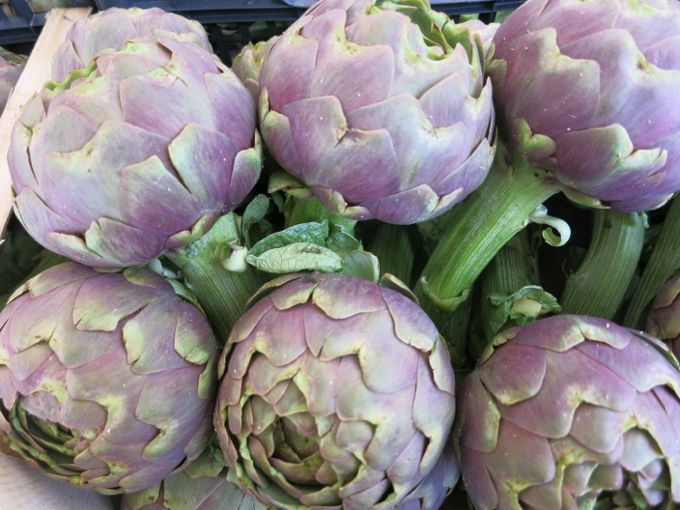
Artichokes are thistles - the bud of the thistle flower. As one writer said, why do you think somebody thought there was something in there that was worth eating? They think they come from North Africa, but by Roman and Greek times they had spread to southern Europe. As well as being a popular foodstuff they were also thought to be an aphrodisiac, which caused the French court to be scandalised when the Italian Catherine de Medici became their queen and insisted on eating them. Women were not supposed to. I did see somewhere that the word derives from something Arabic, but I think Bert Greene has a rather more interesting story.
"The true moniker for this thorny bite of green stuff is said to be cooked up from two Middle English words: hortus and chokt, literally meaning "a garden strangler". And from the smattering of knowledge that I have picked up about the cutlivation of artichokes, there is considerable substance to that description. For the roots of the globe artichoke grow like weeds in the right climate and must be restrained from taking over a garden by some very assiduous surgery." Bert Greene
They are also a real chore to prepare:
"it's not easy. Not at all. Artichokes are stubborn and prickly, and turning them is a bit like grabbling with a small cactus. You will prick yourself; you might bleed all over the artichoke leaves. But if you do, it doesn't really matter, because you're going to rid the artichoke of all those leaves anyway, stripping away everything beautiful about it only to reveal its claylike, yellow-grey core. This process takes skills that most cooks do not get to practice very often. It takes time—roughly 10 minutes per artichoke, in my experience. And it is as demoralizing as vegetable cookery gets." David Tamarkin - Epicurious
Which is how we get back to artichoke hearts in a jar. This is what I was recommended to get in my Jamie recipe, so this is what I got. Marinated artichoke hearts. But you can also get them from the deli, and also canned ones, which generally people thought were not as good unless you are going to mush them up into something (though beware of the odd tough leaf that has been left on) - or make your own marinated artichoke hearts. And you can do this. There are lots of recipes out there, but the first one I found was from Housewife How-to's where it was simply called Home-made marinated artichoke hearts. They looked like this:
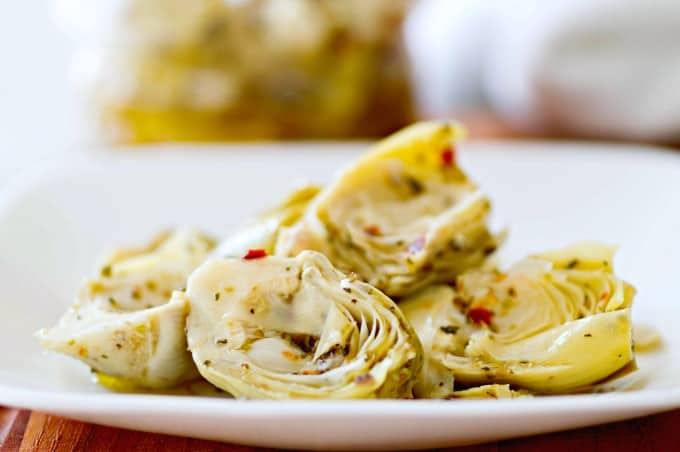
I imagine that you could add herbs and other flavourings at will according to your own tastes. You can get frozen artichoke hearts too, so maybe you would be better off with those to make your own marinated ones.
As to using those 'mushy' canned ones the best idea seemed to be in an Artichoke hummus from Deb Lindsey of the Washington Post.
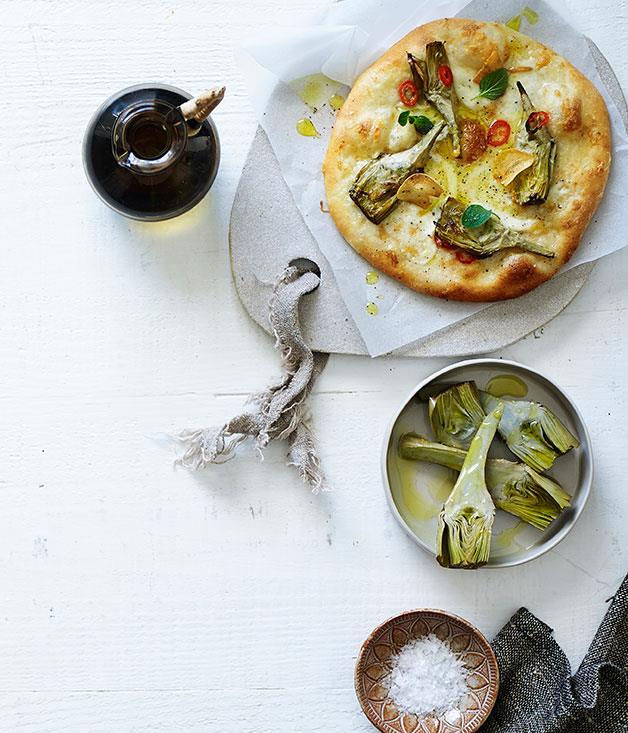
As for the marinated variety. Well there are lots of things you can do with these. For a quick selection you could check out Bon appétit which has a shot list of suggestions, as does Gourmet Traveller. Pizza toppings seem to be a favourite. But some of my favourite chefs also pitch in with their ideas.
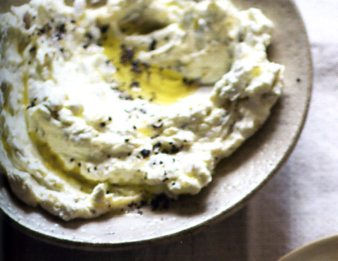
One that I may try tomorrow is for Artichoke and lemon labneh - a kind of yoghurt dip from Greg Malouf, although I see it includes preserved lemons in the list of ingredients and I currently don't have any of those. I shall have to check out the supermarket shelves tomorrow. If I can't find any then I will resort to the artichoke hummus above.
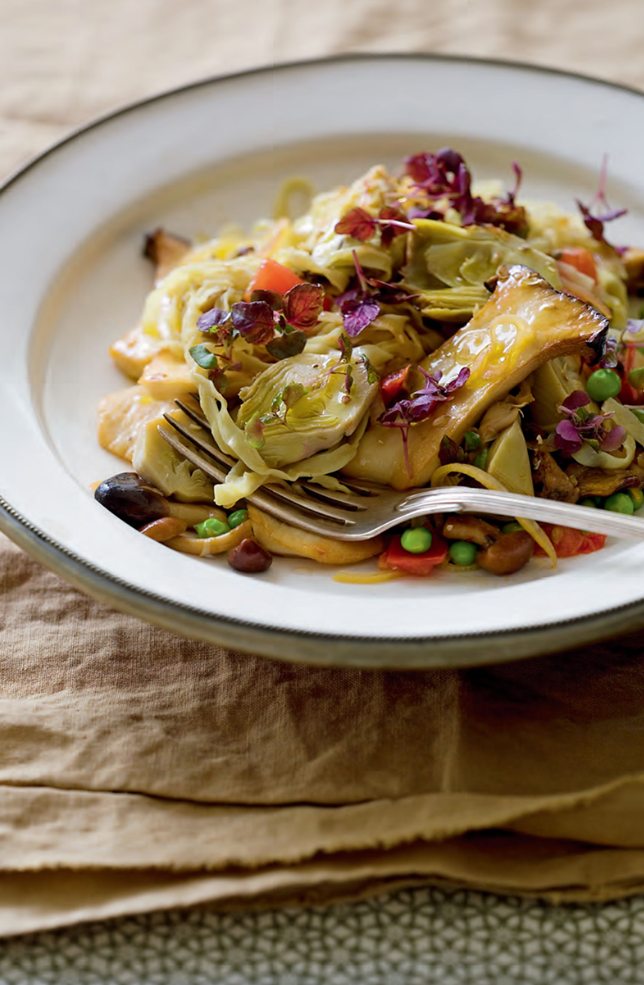
The wonderful Greg Malouf also has a recipe for Buttered egg noodles with artichokes, cèpes and saffron, which I might try some time. And they did pop up in other pasta recipes here and there.

And whilst we are on cheffy Middle-Eastern cooks, Yotam Ottolenghi has Brown rice 'paella' with roast artichokes and peppers.
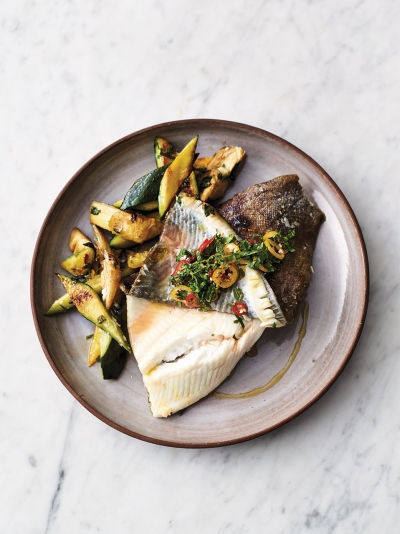
But it was Jamie Oliver who started me on the jars of marinated artichokes thing. The other day I managed to watch a small portion of one of his cooking shows - the one about five ingredients, in which he demonstrated a delicious looking Crispy skin lemon sole, and it only seemed to take a few minutes too. So I had a look at his website, and sure enough he has a few recipes that use these little jars. The other one that took my fancy was Potato and artichoke al forno.

Nigel Slater did not seem to be a huge fan of the jarred or canned variety. Most of his artichoke recipes used real artichokes, but there was a quick one from Fast Food - Penne with artichokes and parmesan. No picture though.
I imagine it's one of those things that you just have to use here and there. Get used to it and be imaginative. Perhaps the simplest dish I found was to simply roast them in the oven with some olive oil and flavourings to taste until crisp - and then serve as nibbles before a meal. I could try that too. But I'm certainly not going to be precious about using the 'real' thing.
“I’d rather have someone make the recipe a lot, using canned artichokes, than closing the book and putting it back on the shelf, without making anything.” David Lebovitz












Comments